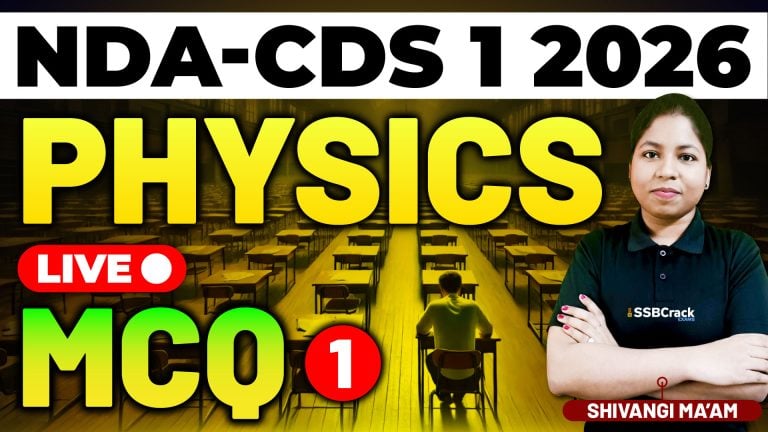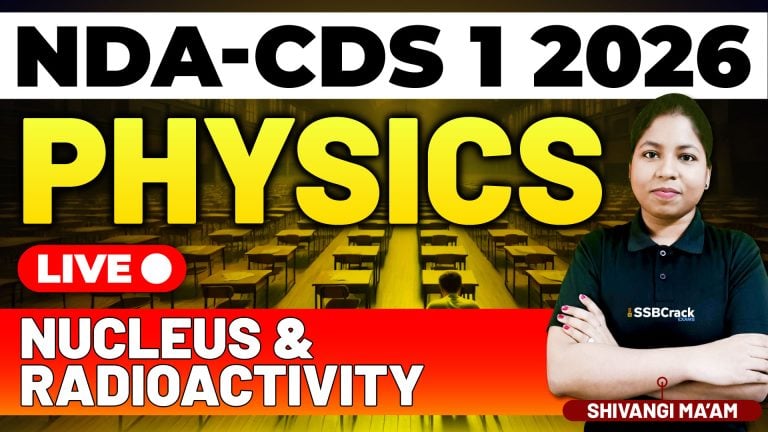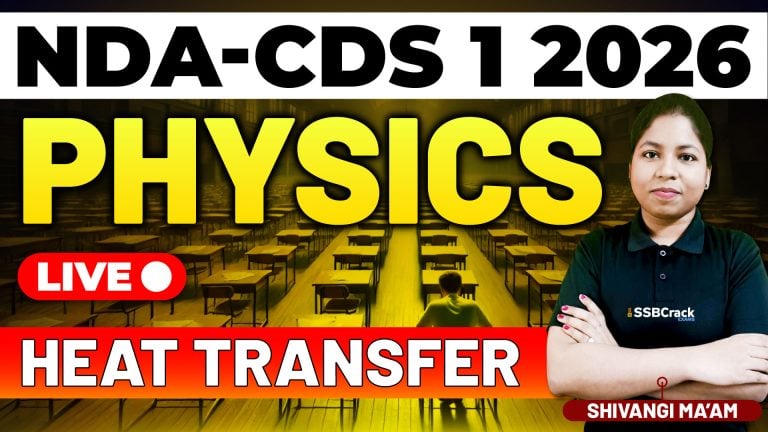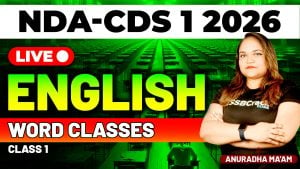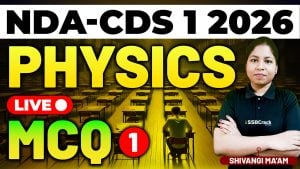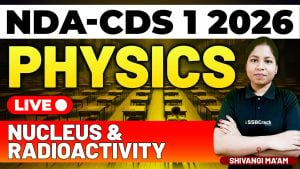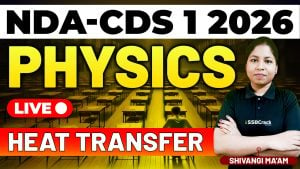Recently, a class was conducted in view of the National Defence Academy and Naval Academy (NDA-NA) Exam – Paper I – Maths, with a focus on the topic of Trigonometry. The session was centered around solving multiple-choice questions (MCQs) related to trigonometry, emphasizing how these types of questions appear in the NDA-NA exam and how to approach them efficiently.
In this blog, we will discuss the key takeaways from the class, along with essential strategies that can help you effectively prepare for trigonometry in the NDA-NA exam. By the end of this article, you should have a clear understanding of the topic and the best methods to approach trigonometric questions confidently.
Overview of the Class: Trigonometry in Focus
Trigonometry is one of the most important and vast sections in the NDA-NA Mathematics paper. The recent class aimed to address this topic from an exam-oriented perspective by solving a variety of MCQs from both previous years’ papers and expected questions. The class discussed how understanding key trigonometric concepts and formulas can help solve problems quickly and accurately.
Here’s a summary of the key areas of trigonometry covered during the session:
1. Trigonometric Ratios and Their Applications
The class began with a quick revision of the basic trigonometric ratios — sine, cosine, tangent, and their reciprocals, cosecant, secant, and cotangent. These ratios form the building blocks of trigonometry and are essential for solving almost any problem in this topic. Many of the MCQs revolved around applying these ratios in right-angled triangles, where students were required to identify the correct trigonometric function based on the information provided in the question.
2. Trigonometric Identities
The session highlighted the importance of memorizing and understanding key trigonometric identities. These identities are often tested in exams either directly or indirectly by embedding them within a more complex problem. Examples of such identities include those related to the sum and difference of angles, double angles, and half-angles. The class solved several MCQs that involved simplifying expressions using these identities.
3. Trigonometric Equations
MCQs involving trigonometric equations were also a focal point of the class. Students were guided through solving these equations by using standard formulas and relationships between the trigonometric ratios. In some cases, the challenge was to find general solutions to the equations, which is a common type of question in the NDA-NA exam. The class emphasized the importance of recognizing patterns and common trigonometric values to solve these questions quickly.
4. Inverse Trigonometric Functions
Inverse trigonometric functions (ITF) were another key area discussed during the class. MCQs involving ITF require a solid understanding of the range and domain of the inverse functions, along with their properties. The session dealt with questions that required students to convert between trigonometric and inverse trigonometric forms, a common technique tested in the NDA-NA exam.
5. Trigonometric Functions in Different Quadrants
Understanding the behavior of trigonometric functions in the four quadrants of the unit circle was a major focus of the class. The NDA-NA exam often tests students’ ability to determine the sign and value of trigonometric ratios depending on the quadrant in which the angle lies. Questions based on angle conversions, such as converting degrees to radians and vice versa, were solved, along with those that required students to calculate trigonometric values in specific quadrants.
Strategies for Preparing Trigonometry for NDA-NA Exam
Given the importance of trigonometry in the NDA-NA exam, it is crucial to have a structured preparation plan for this topic. Here are some effective strategies to enhance your understanding and performance:
1. Understand Basic Concepts Thoroughly
Before diving into complex problems, ensure that you have a strong foundation in the basic concepts of trigonometry. Be clear on the definitions of trigonometric ratios, how they are applied in right-angled triangles, and their relationships with one another. These fundamental concepts will help you in solving both direct and advanced problems.
2. Memorize Important Trigonometric Identities
The NDA-NA exam often tests your ability to simplify trigonometric expressions using key identities. Ensure that you memorize and understand the following identities:
- Sum and difference formulas
- Double angle and half angle formulas
- Product-to-sum and sum-to-product formulas
Regular revision of these identities is essential to retain them during the exam. Practice simplifying complex expressions using these identities so that you can apply them quickly during the test.
3. Practice Solving Trigonometric Equations
Trigonometric equations are a common type of question in the NDA-NA exam. Learn the standard techniques for solving these equations and practice recognizing patterns. Focus on solving general solutions for trigonometric equations, as they often appear in competitive exams. Regular practice will help you develop a systematic approach to solving such questions within a limited time.
4. Master the Unit Circle and Quadrants
One of the key aspects of trigonometry is understanding how trigonometric functions behave in different quadrants. The signs of trigonometric ratios vary depending on whether the angle lies in the first, second, third, or fourth quadrant. Ensure that you practice enough questions involving angles in different quadrants so that you can quickly determine the correct sign and value of the trigonometric ratio.
5. Get Comfortable with Inverse Trigonometric Functions
Questions involving inverse trigonometric functions can be tricky, especially if you’re not familiar with their domain and range. Make sure you understand the basic properties of inverse functions and how they relate to regular trigonometric functions. Practice converting between trigonometric and inverse trigonometric forms and solving related equations.
6. Solve Previous Years’ Papers
One of the best ways to prepare for the NDA-NA exam is by solving previous years’ question papers. This will help you familiarize yourself with the type of questions that are likely to appear and will give you a sense of the exam pattern. In particular, pay attention to the variety of trigonometry questions that have been asked over the years. Practice solving them within the time constraints of the actual exam to improve both your speed and accuracy.
7. Use Shortcuts and Tricks
While it is important to understand the fundamental concepts, learning shortcuts and tricks can help you solve trigonometry questions faster in the exam. For example, knowing how to quickly convert angles between degrees and radians or remembering specific values for standard angles (like 30°, 45°, and 60°) can save you time.
8. Take Mock Tests Regularly
Mock tests are an excellent way to simulate the actual exam environment. Take regular mock tests to evaluate your performance and identify areas where you need improvement. Focus on time management during these tests, as it is crucial to balance speed and accuracy in a competitive exam like NDA-NA.
Conclusion
Trigonometry is a significant part of the NDA-NA exam, and mastering it can significantly boost your overall score in the Mathematics section. The recent class provided valuable insights into how trigonometry questions are structured in the form of MCQs and how to approach them efficiently. By focusing on key areas such as trigonometric ratios, identities, equations, and inverse functions, you can build a strong foundation in this topic.
To excel in trigonometry for the NDA-NA exam, regular practice is essential. Solve a variety of MCQs, revise important concepts, and take mock tests to track your progress. With the right preparation strategy, trigonometry can become one of your strongest areas in the exam, helping you move closer to your goal of joining the National Defence Academy or Naval Academy.


